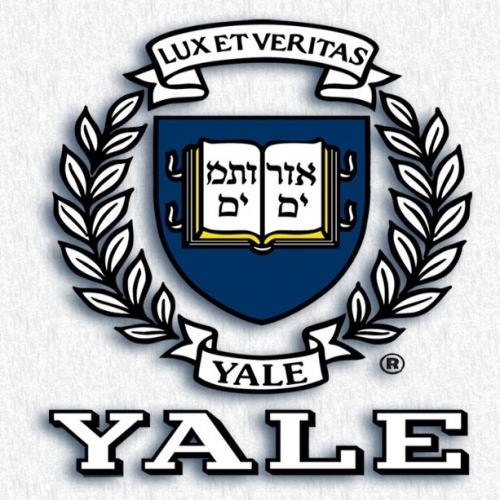Studying the galaxies to get a better sense of our universe
How do galaxies form? What is the nature of dark matter? Dr. Marla Geha uses the Universe's smallest galaxies to answer these questions. Over 90% of the mass in the Universe is in the form of dark matter, yet its exact form is unknown. Our home galaxy, the Milky Way, is surrounded by two dozen smaller satellite galaxies. Satellite galaxies are proving pivotal in determining the properties of dark matter. Studying galaxies like the Milky Way will provide critical new understanding of galaxy formation and of the nature of dark matter. By studying our sibling galaxies, we learn more about our own. Dr. Marla Geha and her team at Yale University are using the smallest galaxies in the Universe to answer its largest questions.
The properties of satellite galaxies provide critical clues to how galaxies form and can test the nature of dark matter. However, the number of Milky Way satellite galaxies and their properties do not fully agree with well-established cosmological models. While it is possible that these models are incorrect, it is equally plausible that the Milky Way satellite population is not representative of a typical Milky Way-mass galaxy. Expanding the number of Milky Way-like galaxies with known satellites is required to properly assess these discrepancies, but is observationally challenging.
Using the world's largest telescope, Dr. Geha is leading a team whose goal is to spectroscopically identify satellite systems around 100 galaxies analogous to the Milky Way. They will determine whether the Milky Way's satellite population is typical of galaxies at this mass scale, or if the Milky Way is itself an outlier.
-
Dr. Geha has begun this long term (1-3 year) project to identify satellite systems around galaxies analogous to our Milky Way (our Galaxy's "cosmic siblings") and identify faint galaxy satellites around 100 Milky Way siblings. This will allow us to understand the place of the Milky Way in the context of the full Universe. How do the properties of the Milky Way and its satellites compare to other similar systems?
-
Around the Milky Way itself, satellite galaxies are readily identified because they are nearby and appear larger than the multitude of background galaxies. In systems more distant than the Milky Way, satellites are almost indistinguishable from these far more numerous background galaxies. Identifying satellites around more distance systems requires spectroscopy for many thousands of sources-- prohibitively time consuming. To increase the efficiency of finding satellite around galaxies similar to the Milky Way, they are currently obtaining complete spectroscopy to very faint limits for a small number of Milky Way siblings. They are applying advanced machine learning techniques to these data to determine if there are subtle properties (colors, sizes, shapes) which can help differentiate satellites from background galaxies. Early results suggest that it is possible to reduce the number of candidates requiring spectroscopy by a factor of ten. They will apply these learning algorithms to select candidates for a much larger sample of Milky Way siblings and pursue spectroscopy for this more manageable sample.
-
Dr. Geha recently established the importance of her studies of ultra-faint galaxies by measuring their total masses. Her measurements showed that the visible stars in the ultra-faint galaxies accounts for less than one percent of their total measured masses, making them the least-luminous and most dark-matter dominated galaxies in the known Universe. With her students and collaborators, she used facilities including the Keck 10-meter telescope and the Hubble Space Telescope to measure ages and chemical compositions of stars in the ultra-faint galaxies, demonstrating that they are also the oldest and least chemically enriched known galaxies. As an outcome of her work, the ultra-faint galaxies are now a favorite target of high-energy telescopes searching for evidence of dark matter via gamma-ray photons produced as dark matter particles collide and annihilate. Geha is currently involved in an effort to search for more of these extreme galaxies using data from Dark Energy Survey (DES).
- Geha's research group has discovered many objects around the Milky Way galaxy including the least luminous globular cluster and a stellar stream thought to be created as the Milky Way's gravity tore apart a star cluster. Her group has just submitted a paper on the first Milky Way satellite galaxy discovered at radio wavelengths and conirmed as a low mass galaxy at the outskirts of the Milky Way. She is currently leading a project to discover other low luminosity galaxies around systems beyond the Milky Way (the SAGA Project).
Bio
Dr. Marla Geha believes astrophysics is a study that continually provides answers to our origin and the nature of our existence. Observing the stars in the sky, and uncovering the origin our galaxy and our Sun are studies that she is passionate about. Astrophysics, according to Dr. Geha, shouldn't be intimidating. She hopes to help others find their passion in astrophysics both as a professor at Yale and through outreach educational opportunities.
Professor Geha is the Director of Research Telescopes at Yale University. Yale's telescope access includes numerous small telescopes in Chile, the Palomar 5-meter telescope in California and 20 nights per year on the world's largest optical facility, the Keck Telescopes. Geha is an active member of the Large Synoptic Survey Telescope (LSST) and served as co-chair of the LSST Milky Way and Local Volume working group from 2010-2013. She has served on several National Science Foundation committees, telescope allocation committees for the Hubble and Spitzer Space Telescopes, and is a regular reviewer for the Astrophysical Journal, Monthly Notices of the Royal Astronomical Society, and Nature. She is a current member of the National Optical Astronomy Observatory Users Committee.
As a dedicated educator, Geha has taught many courses at Yale University and beyond. In 2014, she is teaching a course for undergraduate astrophysics majors entitled Astrophysics Research Methods. This course prepares students for professional research in the field of astrophysics and draws upon real-life astrophysics data to teach problem solving and computer programming skills. As part of this course, she leads a field trip to the Arecibo Radio Telescope in Puerto Rico where students have the opportunity to use the telescope to plan and execute their own observations. The goal of the course is to bring the creativity, critical thinking, and spirit of scientific research into the classroom. Geha also participated in the 2014 National Academies Summer Institute on Undergraduate Science and Engineering Education at Yale University, a three day workshop aimed to develop and improve active learning teaching methods in the classroom.
Geha's science has been featured in popular articles published in Time Magazine, CNN, The Daily Mail, Popular Science, Science News and the John F. Kennedy Legacy Gallery. She is regularly invited to conferences to present her work or give review talks. In the first half of 2014, she gave invited talks at Harvard University and the National University of Singapore, an invited review on science with the next generation space telescope at the American Astronomical Society meeting (Washington DC), and a webinar talk for the Observatorio Nacional in Rio de Janeiro, Brazil. She was an invited participant to a small workshop entitled "Fundamentals of Astrophysics" in Calistoga, CA and co-organized a meeting at the Aspen Center for Physics entitled "Dwarf Galaxies as Cosmological Probes". She is currently writing a review article entitled "Evidence for Dark Matter in Dwarf Galaxies" for the Annual Review of Astronomy and Astrophysics.
In 2009, Professor Geha was named one of Popular Science magazine's "Brilliant 10" young scientists in the country. In 2010, she was selected as an Alfred P. Sloan Research Fellow. In 2011, Geha was name one of the Up and Coming Alumni at University of California, Santa Cruz. She was a Whitney Humanities fellow at Yale between 2011 and 2012, and is a resident faculty fellow at Yale's Berkeley College. Between 2012-2014, she was a Kavli Frontiers of Science Fellow, participating and organizing sessions for the yearly U.S. Kavli Frontiers of Science meeting hosted by the National Academy of Science.
Geha's undergraduate degree is in Applied and Engineering Physics from Cornell University (1991-1995). She earned a Masters in Astrophysics from New Mexico State University (1995-1997). She was a post-graduate researcher at the Lawrence Livermore National Laboratories (1998), working with the MACHO project, the team which first discovered gravitational microlensing events in the Milky Way. She did her Ph.D. graduate work at the University of California, Santa Cruz (1999-2003), where she began her long term interest in dwarf galaxies, earning a PhD in Astrophysics in 2003. While a Ph.D. student at Santa Cruz, she was awarded the Whitford prize for outstanding thesis work and fell in love with surfing. She was then awarded a Hubble Postdoctoral Fellow at the Observatories of the Carnegie Institution of Washington (2003-2006), and spent a brief time as a Plaskett Postdoctoral Fellow (2007) at the Herzberg Institute of Astrophysics in Victoria, Canada. She arrived at Yale in 2008 as an Assistant Professor, and was promoted to the rank of full Professor in 2014.


